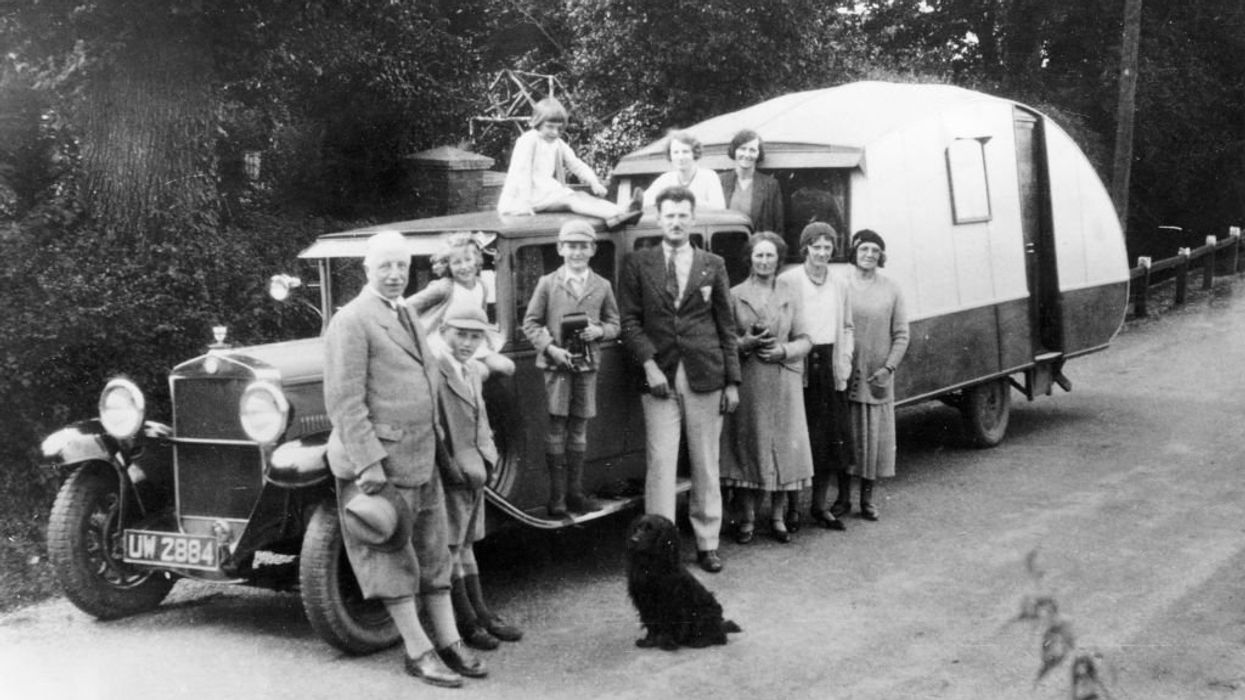
© 2025 Blaze Media LLC. All rights reserved.
University 'Outdoor Decomposition Laboratory' Studies Human Remains to Shed Light on Homicide Theories
March 10, 2012
"we're not a particularly squeamish lot"

SAN MARCOS, Texas (The Blaze/AP) — For more than five weeks, a woman's body lay undisturbed in a secluded Texas field. Then a frenzied flock of vultures descended on the corpse and reduced it to a skeleton within hours.
But this was not a crime scene lost to nature. It was an important scientific experiment into the way human bodies decompose, and the findings are upending assumptions about decay that have been the basis of homicide cases for decades.
Experienced investigators would normally have interpreted the absence of flesh and the condition of the bones as evidence that the woman had been dead for six months, possibly even a year or more. Now a study of vultures at Texas State University is calling into question many of the benchmarks detectives have long relied on.
Watch the AP report:
The time of death is critical in any murder case. It's a key piece of evidence that influences the entire investigation, often shaping who becomes a suspect and ultimately who is convicted or exonerated.
"If you say someone did it and you say it was at least a year, could it have been two weeks instead?" said Michelle Hamilton, an assistant professor at the school's forensic anthropology research facility. "It has larger implications than what we thought initially."
The vulture study, conducted on 26 acres near the south-central Texas campus, stemmed from previous studies that used dead pigs, which decompose much like humans. Scientists set up a motion-sensing camera that captured the vultures jumping up and down on the woman's body, breaking some of her ribs, which investigators could also misinterpret as trauma suffered during a beating.

Researchers are monitoring a half-dozen other corpses in various stages of decomposition, and they have a list of about 100 people prepared to donate their bodies to the project, which the school says is the first of its kind to study vultures.
"Now that we have this facility and a group of people willing to donate themselves to science like this, we can actually kind of do what needs to be done, because pigs and humans aren't equal," Hamilton said.
The forensic center opened in 2008, as did a similar facility at Sam Houston State University in Huntsville, making Texas home to two of the nation's five "body farms."
At the farms, forensic pathologists observe the decomposition process in natural surroundings to see how corpses react to sun and shade, whether they decay differently on the surface or below ground and what sort of creatures — from large to microscopic — are involved.
Only in recent years has academic literature tried to establish formulas for death time based on stages of decomposition and environmental factors such as temperature conditions where the body was found.
The vulture research has drawn interest from homicide investigators, including Pam McInnis, president of the Southwestern Association of Forensic Scientists and director of the Pasadena Police Crime Lab in suburban Houston. She said the ability to account for vultures would "significantly" help investigators who already use insects and their life cycles to estimate time of death.
The body in the vulture study was that of Patty Robinson, an Austin woman who died of breast cancer in 2009 at age 72. She donated her remains to research, and they were placed in a five-acre fenced area.
Her son, James, said the Texas State research seemed like a worthy project.
She'd be delighted "if she could come back and see what she's been doing," he said. "All of us are pretty passionate about knowing the truth."
As for the vulture research, "we're not a particularly squeamish lot," he added.
The project began after scientists noticed scavenger damage on other bodies, an anomaly that puzzled them because the site several miles north of campus is secured against animal intruders.
"It didn't fit the model of scavengers that we had seen before and what people had written about," said Kate Spradley, an assistant professor at Texas State who also works on the project. "We realized we didn't account for something and it was vultures."
Vultures fly over much of the United States and are particularly abundant in the Southwest. Two of the most common species are turkey vultures and the more aggressive black vultures, which can exceed 2 feet in length, weigh 5 to 6 pounds and have wingspans of 5 feet.
The initial surprise was that it took vultures 37 days to find the body. Researchers visited the site daily and checked the camera for any activity.
"Nothing, not even a rat," Hamilton said.
Then on the day after Christmas 2009, a graduate student working on another project at the site alerted them to the vultures' swift work on the corpse.
"I was wondering if it ever was going to happen," Spradley said. "We downloaded the photos, and it was stunning."
She and Hamilton are working with Texas State geographer Alberto Giordano to map the area where birds dragged bones. They hope to make a predictive model for law enforcement officers that will help determine time of death.
Sgt. Jim Huggins, a recently retired Texas Department of Public Safety criminal investigator who now teaches forensic science at Baylor University, said vultures were always something of a mystery for investigators.
Previous research on scavenged remains focused on carnivores such as coyotes or rodents.
"This is, as far as I'm concerned, it's cutting edge," he said. "No one has ever sat down and put a pencil down and attempted this before. ... This is going to, I think, change some minds about scavengers."
When unidentified remains turn up, the vulture research can also be used to help include or exclude people who have been reported missing, Spradley said.
Hamilton said he used to hate vultures. "But now I kind of appreciate what they do, how they dispose of decomposing animals on landscape," he said. "They perform a really serious function."
Another lab that studies the decomposition of bodies in a field environment is the University of Tennessee Forensic Anthropology Center. According to the university website, this lab was the first of its kind to study systematic decomposition of bodies.
National Geographic featured the UT lab a few years ago. Watch a clip from that feature (Warning: This video has some graphic images):
According to the University of Tennessee website, the donated bodies, which are of tremendous scientific value, are treated with the most "respect and compassion" as possible.
Want to leave a tip?
We answer to you. Help keep our content free of advertisers and big tech censorship by leaving a tip today.
Want to join the conversation?
Already a subscriber?
more stories
Sign up for the Blaze newsletter
By signing up, you agree to our Privacy Policy and Terms of Use, and agree to receive content that may sometimes include advertisements. You may opt out at any time.
Related Content
© 2025 Blaze Media LLC. All rights reserved.
Get the stories that matter most delivered directly to your inbox.
By signing up, you agree to our Privacy Policy and Terms of Use, and agree to receive content that may sometimes include advertisements. You may opt out at any time.





